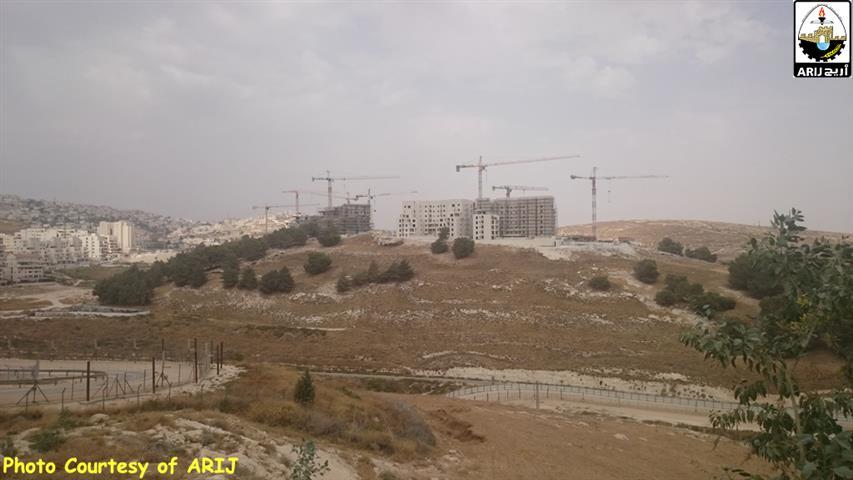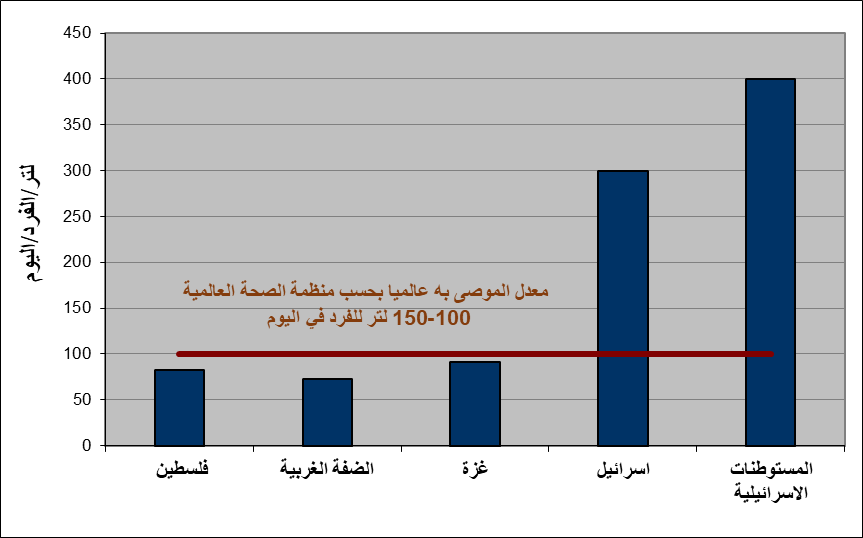On the 30th of August 2015, the Israeli occupation authorities issued two military orders targeting Palestinian structures in Beit Sahour city in Bethlehem Governorate. Owners of the structures were notified to halt the construction of their structures under the pretext of lacking building authorization from the Israeli Civil Administration due to their location in Area “C”, which according to Oslo II Interim agreement of 1995, Israel retains full and extensive control, including over security, zoning and planning.
The demolition orders received by citizens of Beit Sahour city state that the existing structures were built/installed in violation of the fourth chapter of the Israeli City, Village, and Building Planning Law no. 79 of 1966 which was amended after the 1967 war by the Israeli Occupation Authorities on the basis of Military order No. 418 to comply with Israel's interests and settlement plans in the occupied Palestinian territory.
The Israeli Civil Administration gave Palestinians of Beit Sahour town till the 21st of September 2015 to proceed with license procedures. However, they also pointed out that pursuing license procedures does not guarantee Palestinians a license by the Israeli civil administration as stipulated in the Order or stop possible demolition during that time. A copy of the military order and a detailed description of the military orders:-
1- Military order No. 149356: targets a caravan that was installed by citizen Issa Habib next to his house to store hygiene and material Handling tools. Citizen Habib’s house and Caravan are located on Al Janab road, which in the past was used to provide an access to the city of Jerusalem. The road was open to both, Palestinians and Israeli settlers, to reach the city of Jerusalem before the outbreak of the first Palestinian Intifada in 1987; however, following the outbreak of the first intifada, the Israeli occupation authorities tightened its grip on Palestinians accessing the road and set up a checkpoint at the end of the road and only allowed Palestinians with valid permits to cross the checkpoint and leave to Jerusalem; while continued to allow settlers coming from the Gush Etzion settlement bloc west of Bethlehem city, as well as those coming from settlements of Tekoa, Nekodim, El David (Gush Etzion East) and the settlements in Hebron to use this road to get to the city of Jerusalem and vice versa. See Photo 1 and a copy of the military order Targeting Citizen Habib property
Photo 1 & A copy of the Israeli militray order targeting Habib's property.
Following the outbreak of the second Palestinian Intifada in September 2000, and Israel's announcement to start building the segregation wall in the occupied West Bank, Israel tightened its procedures to an unprecedented level, shut down the entire road and even destroyed the infrastructure and denied Palestinians access to this road. Even Palestinians, whose houses were built alongside Al Janab Road were denied access to their homes using this road and were forced to find an alternative road to be able to reach their homes. Meanwhile, the Israeli occupation Authorities constructed a new bypass road on lands of Beit Sahour, Sur Baher and Al Khas communities that provides access to the settlement of Har Homa and then to Jerusalem city to compensate settlers living in the aforementioned Israeli settlements for the closure of the road that was used in the past as an access to Jerusalem. Today, Al Janab road is considered a “dead road” for Palestinians after it constituted a vital geographic access to Jerusalem and vice-versa. See Photo 2
Photo 2: The road which provided access to Jeusalem before the outbreak of the first Intifada
2- The second military order targeted a Poultry Butcher Shop owned by citizen Shadi Sha’lan. The place is an owned property of Beit Sahour Municipality and is located in the area classified as “C” , alongside Al Janab road. Opposite to the shop, one can clearly see the path of the Israeli Segregation Wall constructed on lands of Beit Sahour city.
Photos 3 & 4: Shadi Sha'lan Poultry Butcher Shop
Below is a translation of the military order as served by the Israeli Civil Administration to the Palestinian Families: “ Since you are the owner / liable / contractor / Work Manager of the aforementioned mentioned property, which is undergoing construction (as detailed in the warning) without a license and / or violating the content of the license and / or built contrary to the regulations and orders and instructions in force and / or violating the master plan of the area/ height/ number of floors/ site/ prohibited construction, you are required under Article 38 (1) (3) of Planning of Towns, Villages and Buildings law, No. 79 of the year 1966 to immediately halt construction in the property.” See Map 1
Map 1: the location of the two threatened structures in Beit Sahour city
The Israeli City, Village, and Building Planning Law no. 79 of 1966
The Palestinian territory was subjected to the Jordanian City, Village, and Building Planning Law no. 79 of 1966 before Israel’s occupation of the Palestinian territory. Following Israel's occupation of the Palestinian territory in 1967, it amended the Jordanian law to best suit its colonial interests in the oPt and in accordance with the Israeli Military Order No. 418, which included in its provisions simple and specific sections that fit with Israel’s settlement program in the occupied Palestinian territory . Among the most important items that went under revision were: (1) The Israeli Civil Administration replaced the Jordanian authorities when it comes to applying laws and rules. (2) the Israeli military order fragmented the West Bank into parts where areas inhabited by Palestinians were declared as areas of development and construction where construction is prohibited; whereas areas that were allocated for settlement building were classified as areas of Development and urban building. The Israeli military order No. 418 also stipulated the (3) Cancellation of the local authorities and the transfer of powers to the Regional Planning Committee associated with the Israeli Supreme Planning Council of the Israeli Army and the Israeli occupation, which in turn handed over responsibility to local planning committees, each headed by an officer in the Israeli army. (4) the law also stipulated the set up a committee 'Subcommittee for inspection and construction', which specializes in facilitating transactions for settlers and ensure their comfort and their urban expansion; at the same time ignore the rights of the indigenous Palestinian citizens. (5) The Israeli law gave wide powers to the Israeli Chief of Staff including the appointment of heads of local committees specialized in the development of Israeli settlements.
To conclude
The demolition of Palestinian homes and structures in the occupied West Bank is not part of following ‘legal’ procedure concerning a lack of building permits but is directly related to Israel’s vision in the area it targets. This is reflected by the fact that the majority of demolitions occur in the Israeli controlled Area C. Indeed, whilst Palestinian development has been completely restricted in Area C, Israeli settlements have flourished, and this is related to the appropriation of land via house demolitions. Photos 5 & 6 reveal the newly constructed neighborhood in Har Homa settlement which started in Mid 2015. The plan of the new neighborhood holds number 10310 and states the contruction of 983 new settlement units in the area. Meanwhile, during the period of Januray to August 2015, Israel threatened to demolish around 370 Palestinian homes and structures in the oPt and demolsihed more than 350 homes and structures during th same period.
Photos 5 & 6: The new Israeli neighbrhood being built in Har Homa settlement
The demolition of homes and structures is however illegal under international law, most specifically article 53 of the Convention (IV) relative to the Protection of Civilian Persons in Time of War, Geneva which was adopted on the 12th of August 1949 and states that: “Any destruction by the Occupying Power of real or personal property belonging individually or collectively to private persons, or to the State, or to other public authorities, or to social or cooperative organizations, is prohibited, except where such destruction is rendered absolutely necessary by military operations; and article 147 of the same convention which states that: “…..extensive destruction and appropriation of property, not justified by military necessity and carried out unlawfully and wantonly.” Additionally, article 23 of the Hague Convention of 1907 also provides that “In addition to the prohibitions provided by special Conventions, it is especially forbidden to destroy or seize the enemy's property, unless such destruction or seizure be imperatively demanded by the necessities of war;” and the Universal Declaration of Human Rights Adopted and proclaimed by General Assembly resolution 217 A (III) of, December 10, 1948, Article 17 reads that: “No one shall be arbitrarily deprived of his property.' Which means it bans Israel from destroying or confiscating the property of the Palestinians at any case.”
Prepared by:
The Applied Research Institute – Jerusalem





















